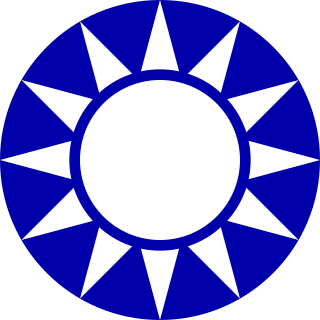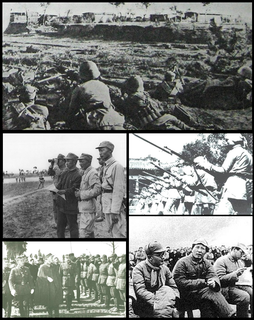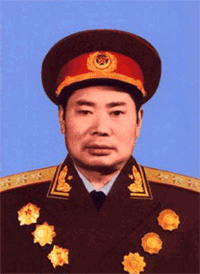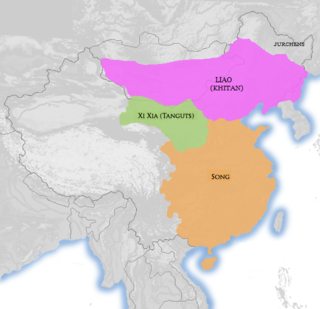
The Western Xia or Xi Xia, also known to the Mongols as the Tangut Empire and to the Tangut people themselves and to the Tibetans as Mi-nyak, was an empire which existed from 1038 to 1227 in what are now the northwestern Chinese provinces of Ningxia, Gansu, eastern Qinghai, northern Shaanxi, northeastern Xinjiang, southwest Inner Mongolia, and southernmost Outer Mongolia, measuring about 800,000 square kilometres. Its capital was Xingqing, until its destruction by the Mongols in 1227. Most of its written records and architecture were destroyed, so the founders and history of the empire remained obscure until 20th-century research in the West and in China.
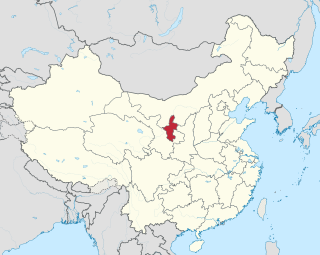
Ningxia, officially the Ningxia Hui Autonomous Region (NHAR), is an autonomous region of the People's Republic of China located in the northwest part of the country. Formerly a province, Ningxia was incorporated into Gansu in 1954 but was separated from Gansu in 1958 and was reconstituted as an autonomous region for the Hui people, one of the 56 officially recognised nationalities of China. Twenty percent of China's Hui population lives in Ningxia.
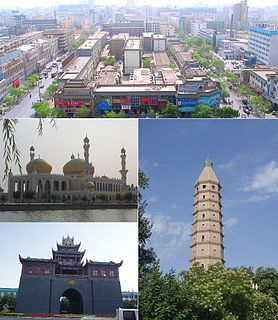
Yinchuan is the capital of the Ningxia Hui Autonomous Region, China, and historically it was the former capital of the Western Xia Empire of the Tanguts. It has an area of 8,874.61 km2 (3,426.51 sq mi) and a total population of 1.99 million. Its built-up area is home to 1,290,170 inhabitants spread between three urban districts. The name of the city literally means "silver river".

Shizuishan is a prefecture-level city and is the northernmost and, by population, the second-largest city in the Ningxia Hui Autonomous Region, and is bordered on all sides except the south by Inner Mongolia. It also sits on the western (left) bank of the Yellow River.

Wuzhong is a prefecture-level city in the Ningxia autonomous region of the People's Republic of China. It was known as Yinnan Prefecture before it was upgraded to a prefecture-level city in 1998. In 2010, Wuzhong had a population of 1.3 million. Wuzhong is located in Northwest of China, the Yellow River flows through the center of the city.

The Second Encirclement Campaign against the Shaanxi-Gansu Soviet was an encirclement campaign launched by the Chinese Nationalist Government that was intended to destroy the communist Shaanxi-Gansu Soviet and its Chinese Red Army in the local region. It was responded by the Communists' Second Counter-Encirclement Campaign at Shaanxi-Gansu Soviet, also called by the communists as the Second Counter-Encirclement Campaign at Shaanxi-Gansu Revolutionary Base, in which the local Chinese Red Army successfully defended their soviet republic in the border region of Shaanxi and Gansu provinces against the Nationalist attacks from April 1935 to July, 1935.
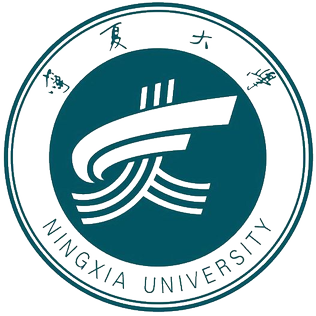
Ningxia University is a regional comprehensive university, co-administrated by Ningxia Hui Autonomous Region and Ministry of Education of the People's Republic of China. It is a Chinese Ministry of Education Double First Class Discipline University, with Double First Class status in certain disciplines.

Bai Lichen is a retired Chinese politician of Hui ethnicity, and the former chairman of Ningxia Hui Autonomous Region and the former president of All China Federation of Supply and Marketing Cooperatives. He was Vice Chairman of the Chinese People's Political Consultative Conference (CPPCC) between 1998 and 2013.
The Ningxia Campaign was a series of battles fought between the nationalists and the communists during Chinese Civil War in the post World War II era, and resulted in the communist victory.
Ma Dunjing was a prominent Chinese general of the Republic of China era, and the son of General Ma Hongkui, who ruled the northwestern province of Ningxia. Born to a Hui family in 1910 in Gansu, he served as an official in his father's Ningxia government. During World War II, he was a General in the National Revolutionary Army. He was a member of the Kuomintang, and fought against the Chinese communist party during the Ningxia Campaign. He fled to Taiwan in 1949, then to Los Angeles in the U.S. with his father in 1950. He was appointed to the Recovery of the Mainland Research Commission in 1954 and he died in the U.S. in 2003. His older brother was Ma Dunhou 馬敦厚 and his younger brother was Ma Dunren 馬敦仁.
Ma Buluan (1905–1969) was a Ma Clique General in the National Revolutionary Army, and a relative of Ma Bufang, the Governor of Qinghai. He fought in the Second Sino-Japanese War and in the Chinese Civil War during the Heshui Campaign, Meridian Ridge Campaign, Ningxia Campaign. His rank was Major General.

The Taiyuan–Zhongwei–Yichuan railway is a railway line in northern China, connecting Taiyuan, the capital of Shanxi Province, with Zhongwei and Yinchuan in Ningxia Hui Autonomous Region. It is a double-track electric railway, opened in 2011.
The History of the administrative divisions of China after 1949 refers to the administrative divisions under the People's Republic of China. In 1949, the communist forces initially held scattered fragments of China at the start of the Chinese civil war. By late 1949, they controlled the majority of mainland China, forcing the Republic of China government to relocate to Taiwan.

The Tongxin Great Mosque is a mosque in Tongxin County, Wuzhong City, Ningxia Hui Autonomous Region, China. The mosque is the oldest and largest mosque in Ningxia.

Ningxia Television or NXTV is a television station located in Ningxia, China. It began broadcasting on October 1, 1970.
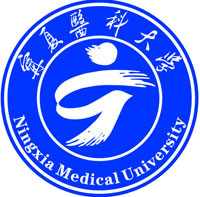
Ningxia Medical University, previously known as Ningxia Medical College, is a medical school located in Yinchuan City, Ningxia Province, China.
The 194th Division was created in February 1949 under the Regulation of the Redesignations of All Organizations and Units of the Army, issued by Central Military Commission on November 1, 1948, basing on the 23rd Brigade, 8th Column, 2nd Army Group of Huabei Military Region. Its history could be traced to 15th Military Sub-district, Jireliao Military District of Jinchaji Military Region formed in November 1944.
The Ordos Campaign of 1592, also called the Ningxia Campaign or Pubei Rebellion, was a rebellion against the Ming dynasty by Liu Dongyang and Pubei, a Chahar Mongol who had previously submitted to the Ming, and its suppression.

The war in Ningxia of 1934, also known as Sun Dianying Campaign, was a minor civil war for control over the Republic of China's province of Ningxia, fought between the warlord Sun Dianying and an alliance against him, consisting of the Ma clique, Governor Yan Xishan of Shanxi, and the Nationalist government of China. The conflict erupted as the unintended consequence of a plan by China's supreme leader, Chiang Kai-shek, to weaken the Ma clique, and resulted in the destruction of Sun Dianying's private army.
Ningxia officials notiffed on 3 August 2018 that the Weizhou Grand Mosque will be forcibly demolished on Friday because it had not received the proper permits before construction. The Weizhou Grand Mosque has been built in Tongxin County, Wuzhong City with about 23 million Muslim population, Ningxia Hui Autonomous Region. Local government accepted the rebuilding of Weizhou Grand Mosque in 2015, and its work started the same year. After the renovation finished under officials observe, the scale of the mosque was bigger than the standards.
